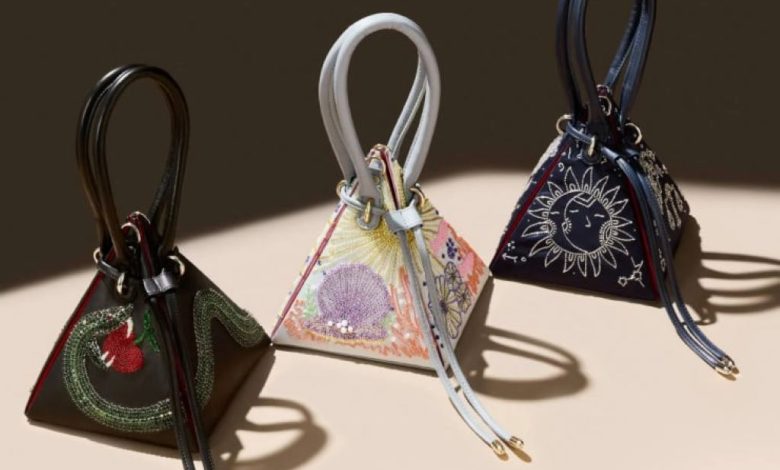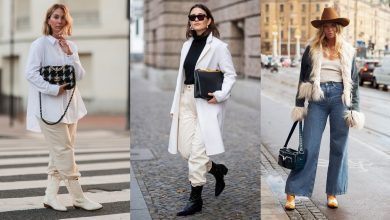Premium vs Ultra Luxury Bag Brand Pyramid Differences

Understanding the world of luxury handbags can feel overwhelming. However, knowing where different brands fall within the hierarchy makes shopping smarter and more rewarding. Whether you are browsing at Luxury On Sales or exploring boutiques worldwide, recognizing the distinctions between premium and ultra luxury brands helps you make informed investment decisions.
The fashion industry operates on a tiered system. Each level represents different craftsmanship standards, heritage values, and price points. Additionally, the bag pyramid brand structure reveals how exclusivity and accessibility shape consumer perceptions. This article explores these differences in depth, helping you navigate the complex landscape of luxury accessories.
What Defines the Luxury Handbag Hierarchy
The luxury handbag market operates on multiple levels. Each tier represents distinct quality benchmarks, brand positioning, and consumer appeal. Therefore, understanding these categories becomes essential for making wise purchasing choices.
Premium brands occupy the entry level of luxury. These labels offer excellent quality and recognizable logos at relatively accessible price points. Meanwhile, ultra luxury brands represent the pinnacle of craftsmanship, exclusivity, and heritage. Their creations often function as wearable art pieces rather than simple accessories.
The differences extend beyond price tags. Ultra luxury houses maintain centuries-old traditions, employ master artisans, and use the rarest materials available. Conversely, premium brands focus on contemporary designs, broader distribution, and marketing-driven appeal.
Premium Luxury Brands: Accessible Elegance
Premium luxury brands bridge the gap between contemporary fashion and traditional luxury. These labels make designer accessories attainable for aspirational consumers. Brands like Coach, Michael Kors, and Kate Spade exemplify this category perfectly.
Quality remains important at this level. However, manufacturing processes often involve more automation than handcrafting. Materials include genuine leather and quality hardware, yet they rarely feature exotic skins or precious metals. Price points typically range from three hundred to two thousand dollars.
Distribution channels for premium brands are notably wider. Department stores, outlet malls, and online retailers commonly stock these products. Additionally, frequent sales and promotions make them even more accessible. This widespread availability increases brand recognition but reduces exclusivity.
Marketing strategies emphasize lifestyle appeal and status symbolism. Premium brands invest heavily in celebrity endorsements and social media campaigns. Their target audience includes young professionals, fashion enthusiasts, and first-time luxury buyers seeking recognizable logos.
Mid-Tier Luxury: The Sweet Spot
Mid-tier luxury brands occupy the space between premium and ultra luxury. Labels such as Mulberry, Longchamp, and Tory Burch represent this category. They offer superior craftsmanship compared to premium brands while maintaining reasonable accessibility.
These brands typically price their handbags between two thousand and five thousand dollars. Materials improve significantly at this level, featuring higher-grade leathers and better construction techniques. However, full hand-stitching and exotic materials remain uncommon.
Selective distribution characterizes mid-tier brands. They maintain flagship stores in major cities while limiting department store presence. Therefore, exclusivity increases without becoming completely unattainable. According to Business of Fashion, this strategic positioning helps brands maintain desirability while growing revenue.
Heritage plays a larger role here than in premium segments. Many mid-tier brands boast decades of history and signature design elements. Their marketing emphasizes craftsmanship stories, timeless appeal, and investment value rather than celebrity endorsements alone.
High Luxury: Approaching the Summit
High luxury brands represent serious investment pieces. Brands including Prada, Bottega Veneta, and Loewe define this tier. Their handbags combine exceptional materials, superior craftsmanship, and strong brand heritage.
Price points range from four thousand to ten thousand dollars for standard styles. Limited editions and special materials command even higher premiums. Additionally, waiting lists become common for popular designs, adding to their desirability.
Craftsmanship reaches impressive levels at this tier. Artisans spend significantly more time on each piece. Hand-stitching becomes more prevalent, and quality control standards tighten considerably. Materials include premium calfskin, lambskin, and occasionally exotic leathers.
Distribution remains highly controlled. These brands operate primarily through their own boutiques and carefully selected luxury retailers. Online availability exists but often excludes the most coveted styles. This scarcity maintains brand prestige and product value.

Ultra Luxury: The Pyramid Peak
Ultra luxury brands occupy the absolute pinnacle. Hermès, Chanel, and Louis Vuitton represent this exclusive category. Their handbags transcend fashion accessories, becoming cultural symbols and investment assets.
Prices start around ten thousand dollars and easily exceed six figures for rare pieces. The iconic Hermès Birkin bag exemplifies this tier, with basic versions starting around twelve thousand dollars. Exotic versions crafted from crocodile or alligator skin command prices exceeding two hundred thousand dollars.
Craftsmanship reaches its zenith here. Master artisans train for years before touching these precious materials. Each bag requires dozens of hours to complete. Hand-stitching, hand-painting, and hand-finishing define the creation process. Therefore, production volumes remain intentionally limited.
Exclusivity defines the ultra luxury experience. Hermès famously maintains waitlists spanning years for their most coveted styles. Chanel regularly increases prices and limits quantities to preserve desirability. This artificial scarcity drives secondary market values even higher.
Heritage represents another crucial differentiator. These houses boast centuries of history, royal patronage, and unbroken traditions. Their brand stories intertwine with cultural history, adding intangible value beyond physical craftsmanship.
Materials and Craftsmanship Differences
Materials separate the tiers dramatically. Premium brands use corrected grain leather and synthetic linings. Mid-tier brands upgrade to full grain leather and suede linings. High luxury incorporates premium skins like Nappa leather and silk linings.
Ultra luxury brands access the finest materials globally. They source exotic skins from certified farms, use precious metal hardware, and incorporate silk twill linings. Additionally, they maintain relationships with tanneries spanning generations, ensuring consistent quality.
Construction methods vary equally dramatically. Premium brands employ mostly machine stitching with some hand-finishing. Mid-tier brands increase hand-stitching percentages while maintaining machine assistance. High luxury brands emphasize hand construction throughout.
Ultra luxury houses require entirely hand-stitched construction. Artisans use traditional saddle stitching techniques ensuring superior durability. Each stitch receives individual attention, creating pieces designed to last generations rather than seasons.
Hardware quality follows similar patterns. Premium brands use plated metals that may wear over time. Mid-tier and high luxury brands use higher quality plating or solid brass. Ultra luxury brands often incorporate precious metals like palladium or gold.
Investment Value and Resale Markets
Investment potential varies significantly across tiers. Premium brands typically depreciate immediately after purchase. Their widespread availability and frequent sales limit secondary market values. However, they serve their purpose as fashionable accessories rather than investments.
Mid-tier brands hold value moderately well. Classic styles from established brands retain reasonable resale prices. Nevertheless, appreciation remains unlikely except for rare collaborations or discontinued favorites.
High luxury pieces maintain value better. Popular styles from brands like Bottega Veneta or Loewe retain sixty to seventy percent of retail value. Therefore, they represent reasonable purchases for those wanting quality without extreme depreciation.
Ultra luxury brands offer genuine investment potential. Hermès bags famously appreciate over time, often outperforming traditional investments. According to Forbes, certain Birkin bags have achieved annual returns exceeding ten percent. Chanel Classic Flaps also maintain strong resale values, typically retaining eighty to ninety percent of retail prices.
Limited editions and exotic materials from ultra luxury houses command premiums above retail. Collectors actively seek rare pieces, creating robust secondary markets. Consequently, purchasing these bags can represent genuine financial strategy beyond aesthetic enjoyment.
Brand Perception and Social Signaling
Each tier communicates different messages. Premium brands signal entry into luxury consumption. They announce fashion awareness and disposable income without extreme wealth. Additionally, they satisfy desires for recognizable logos and brand association.
Mid-tier brands suggest refined taste and quality appreciation. They indicate consumers who value craftsmanship over conspicuous branding. These purchases demonstrate evolving sophistication in luxury understanding.
High luxury brands communicate serious fashion investment. Carrying these pieces signals discernment, appreciation for artistry, and substantial financial resources. They appeal to established luxury consumers rather than aspirational buyers.
Ultra luxury brands represent ultimate status symbols. They communicate wealth, taste, and exclusivity simultaneously. Carrying an Hermès Birkin or Chanel Classic Flap makes unmistakable statements about social positioning. Therefore, these pieces function as wearable wealth indicators.
However, shifting attitudes among younger consumers complicate traditional hierarchies. Many prioritize sustainability, craftsmanship stories, and personal style over logo recognition. This evolution may reshape luxury hierarchies in coming years.
Making Smart Purchasing Decisions
Choosing the right tier depends on individual circumstances. Consider your budget, lifestyle, and luxury goals carefully. Premium brands suit those exploring luxury for the first time or seeking trendy pieces without major investment.
Mid-tier brands work well for quality-focused consumers wanting reasonable longevity. They balance craftsmanship, style, and affordability effectively. Additionally, they offer entry points into heritage brands without extreme prices.
High luxury makes sense for serious collectors building curated wardrobes. These pieces offer exceptional quality with reasonable resale potential. They suit consumers who appreciate artisanship and want investments that retain value.
Ultra luxury represents the pinnacle for those seeking the absolute best. These purchases require significant financial resources and appreciation for traditional craftsmanship. However, they offer unmatched quality, exclusivity, and potential appreciation.
Research thoroughly before purchasing any luxury handbag. Understand authentication markers, common quality issues, and typical pricing. Visit boutiques to examine craftsmanship personally. Read reviews from multiple sources and join collector communities online.
Consider your wardrobe needs practically. A versatile black bag from a mid-tier brand may serve you better than a trendy premium piece. Alternatively, saving for one ultra luxury classic might prove wiser than buying multiple high luxury bags.
Conclusion
The luxury handbag hierarchy reflects quality, heritage, and exclusivity differences. Premium brands offer accessible entry into luxury fashion with recognizable styling. Mid-tier and high luxury brands provide increasing craftsmanship quality and brand prestige. Ultra luxury houses represent the absolute pinnacle, combining centuries of tradition with unmatched artistry.
Understanding these distinctions empowers smarter purchasing decisions. Whether starting your luxury collection or adding another investment piece, recognizing where brands fall within the pyramid helps align purchases with personal goals. Quality, craftsmanship, and brand heritage vary dramatically across tiers, justifying price differences.
Ultimately, the best choice depends on individual circumstances. Consider your budget, lifestyle needs, and long-term goals carefully. Research thoroughly, examine pieces personally, and buy from reputable sources. With proper understanding, luxury handbag purchases can provide years of enjoyment and potentially strong investment returns.
Frequently Asked Questions
What is the main difference between premium and ultra luxury bag brands?
The primary difference lies in craftsmanship, materials, and exclusivity. Premium brands use quality materials with more automation in production, while ultra luxury brands employ master artisans using hand-stitching techniques and the finest exotic materials. Additionally, ultra luxury pieces often appreciate in value, whereas premium bags typically depreciate immediately.
Which luxury bag brands hold their value best?
Hermès consistently leads in value retention and appreciation. Their Birkin and Kelly bags often sell above retail on secondary markets. Chanel Classic Flaps also maintain strong resale values, typically retaining eighty to ninety percent of original prices. Limited editions from these brands command premiums above retail.
Are premium luxury bags worth buying?
Premium luxury bags serve well for fashion-conscious consumers seeking recognizable brands without major investment. They offer decent quality at accessible prices. However, they should be viewed as fashion purchases rather than investments since they typically depreciate quickly and have limited resale value.
How much should I spend on my first luxury handbag?
First-time luxury buyers should consider spending between one thousand and three thousand dollars. This range allows access to quality mid-tier brands offering good craftsmanship without extreme financial commitment. Starting here helps you understand luxury quality standards before potentially investing in higher tiers.
What makes Hermès bags so expensive?
Hermès bags command premium prices due to exceptional handcraftsmanship, rare materials, and extreme exclusivity. Each bag requires a single artisan thirty to forty hours to complete using traditional saddle-stitching techniques. Additionally, limited production, long waitlists, and strong secondary markets maintain high prices and desirability.
Related Topics:
Jacksonville Review: Top Designer Bags You Need to Know
Punch Your Way to Better Mental Health: The Surprising Benefits of Bag Training




